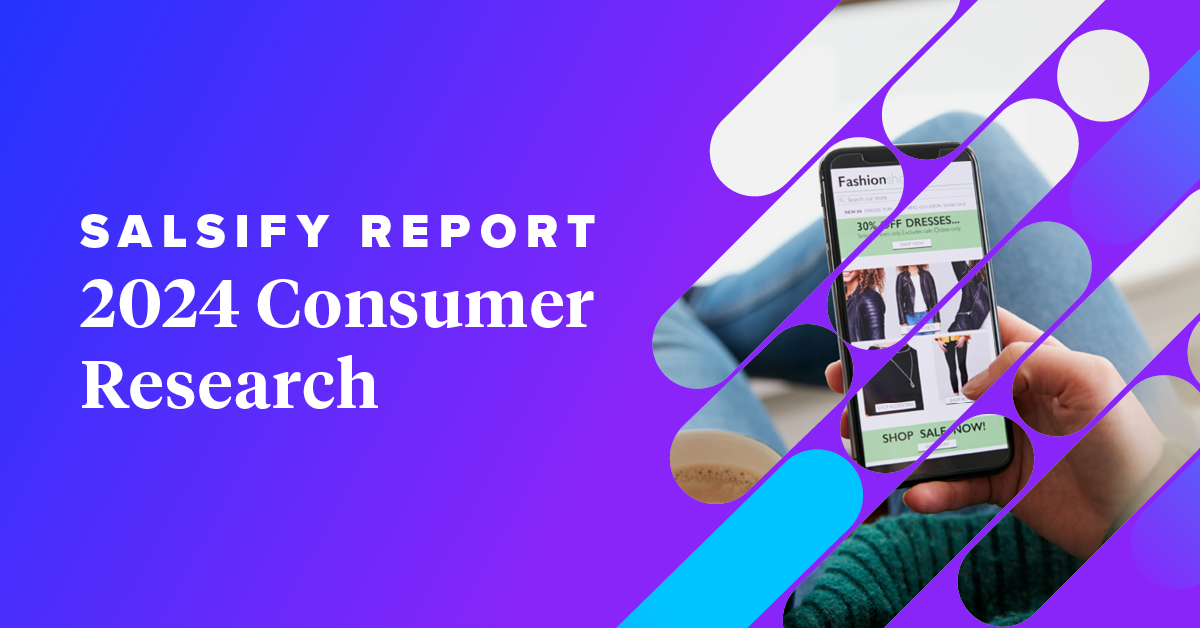What Is Zero-Party Data — And Is It the Future of Ecommerce Personalization?

First party, second party, third party — what do they all mean in the context of data? It’s difficult enough to get your head around these concepts, but when you throw zero-party data into the mix, it’s enough to make your head spin.
Let’s break down what zero-party actually is, why it’s becoming an important asset for modern-day ecommerce brands, and how it can help you create shopping experiences that make your customers feel like VIPs.
What Does Zero-Party Data Mean?
Zero-party data refers to information customers actively and willingly share with a brand — basically, it comes directly from the customer instead of third-party data often collected via tracking tools like cookies. Forrester originally coined the term to describe “data which a customer intentionally and proactively shares with a brand.”
Zero-Party Data Examples
Zero-party data can include specific details a customer shares, such as:
- Birthdays
- Favorite clothing colors
- Preferred sizes
- Product categories a shopper is interested in
Examples of How Zero-Party Data Is Provided
Customers typically provide zero-party data and information through, such as:
- Style quizzes
- Surveys
- Account preferences
- When they sign up for personalized offers on a brand's website
For example, when a shopper completes a style quiz on a clothing website, their answers (like "I prefer bold colors" or "I usually wear size medium") count as zero-party data.
Why Zero-Party Data Is Valuable
This data is incredibly valuable because it’s accurate and comes directly from the customer in exchange for a more tailored shopping experience. The key words here are “comes directly from the customer.” There’s no guesswork involved from the brand or tool used to acquire this information.
Brands can then use zero-party data to suggest certain products that match a customer’s style, offer discounts on categories they’ve shown interest in, or send emails featuring products in their favorite colors.
First-Party Data vs. Zero-Party Data: What’s the Difference?
Both first-party and zero-party data are collected directly from the customer, but the main difference lies in how they are gathered.
First-party data is gathered via customer behavior and interactions with your website, app, or products. This includes data like purchase history, browsing behavior, or loyalty points. The customer isn’t necessarily aware that this information is being tracked, but it's all gathered from their actions and engagement with your brand.
Zero-party data, on the other hand, is information that customers actively and willingly provide. For example, when a customer fills out a quiz, signs up for your emails, or directly tells you their preferences — that's zero-party data.
The main difference is that the customer is fully aware they're sharing this information and often does so in exchange for personalized recommendations, offers, or a better experience.
Both are important and incredibly valuable, but zero-party data usually digs deeper into customer preferences because it’s voluntarily shared.
First-Party Data vs. Second-Party Data: What’s The Difference?
The biggest difference between first-party and second-party data is who collects the data and how it’s shared.
As mentioned above, first-party data is collected through the interactions a customer has with your website, app, or store — things like purchase history, how many loyalty points they’ve accrued, and email sign-ups. It comes from your own channels.
Second-party data is someone else’s first-party data that they share or sell to you. It comes from a trusted partner — another brand or business that collects its own first-party data and then passes it on to you.
For example, if you collaborate with another brand (say, a fitness company if you sell sportswear), they might share customer insights with you, like demographics or shopping behaviors.
First-Party Data vs. Third-Party Data: What’s the Difference?
What separates first-party data and third-party data is very similar to the difference between first- and second-party data: it’s all about how the data is collected and who gathers it.
While first-party data is information about your customers collected via your channels, third-party data is collected by external companies that have no direct relationship with your customers. Data is scraped from websites and apps using cookies and trackers — the companies then sell or provide this aggregated data to businesses like yours.
However, there are a couple of downsides here. Firstly, there’s the glaringly obvious issue that third-party data isn’t about your customers in particular. Instead, it’s about the wider industry as a whole which creates generic data instead of granular data you can use to tailor individual shopping experiences.
Secondly, stricter privacy regulations mean third-party data is quickly falling out of favor. Consumers are more skeptical than ever about giving their data to any old random company (who’s then likely to sell it). Instead, they’d rather give their favorite brands unique insights specifically in exchange for personalized experiences.
A Quick Recap of the Different Ecommerce Data Types
Here are the different types of ecommerce data at a glance:
- Zero-party data: What customers tell you directly.
- First-party data: What you observe from customer actions. It’s collected directly from your own customers via your own channels
- Second-party data: Data received from another company that collected it directly from their customers.
- Third-party data: Data that comes from outside sources and is usually aggregated from a variety of places, so it’s less personal and less reliable.
The Benefits of Zero-Party Data
Because zero-party data is information customers willingly hand over, it comes with a slew of benefits for both sides.
The benefits of zero-party data for brands include:
- It’s precise and personalized: Customers tell you exactly what they want — be it the products they prefer, their size, or interests. This helps you create hyper-personalized experiences like product recommendations (down to sizing and color) and email campaigns.
- It builds trust and transparency: When customers are aware of the information they’re sharing and why, it helps build a stronger, more trusting relationship between them and your brand. Trust is crucial to higher retention rates and long-term loyalty. In fact, according to Twilio, 64% of consumers believe the best way to build trust is through data transparency and protection.
- It gets your brand in front of the right people: With zero-party data, you’re not guessing what customers might like — you know. This means you can create more targeted marketing campaigns that resonate with people on an individual level.
- It’s compliant: Customers voluntarily provide zero-party data, which helps you stay compliant with privacy regulations (e.g., GDPR and CCPA).
- It makes you less dependent on third-party data: Third-party cookies are becoming less effective and have a ton of red tape around them, whereas zero-party data offers a sustainable way to get useful insights from your customers.
Benefits of zero-party data for shoppers include:
- It improves product recommendations: By providing brands with important, personal information (like clothing style or shoe size), customers are more likely to receive relevant products.
- It gives them more control over their data: Consumers have total control over what information they share with brands. They know exactly what data they’re providing and how it’ll be used.
- It creates stronger brand-customer relationships: Customers are more likely to engage with and stay loyal to a brand that respects their preferences and uses their data responsibly. As a result, they feel understood and valued.
Is Zero-Party Data the Future of Ecommerce Personalization?
There are several arguments about why zero-party data is the future of ecommerce personalization (and any kind of personalization, for that matter).
The most objective is third-party cookies' decline and increasing tracking restrictions (eMarketer's research found that 87% of U.S. browsers may become “cookieless” long-term and in the not-too-distant future). Without these insights, brands will struggle to understand and engage their customers.

This is where zero-party data comes in. It offers a future-proof alternative that doesn’t rely on invasive tracking and soothes privacy-conscious consumers. There’s also a lot to be said about how accurate zero-party data is compared to other forms of data. It comes straight from the source, giving you a much clearer picture of exactly what shoppers want. Even better, it’s handed over voluntarily which helps you stay compliant in the muddy waters of new privacy laws.
But, as with anything, there are challenges, like getting customers to share their information. If you ask too much too soon, you might put people off. So, there’s now a need for an extra layer of value upfront — what are you offering shoppers in exchange for their data? Personalized experiences? Discounts? Other perks?
While zero-party data is incredibly valuable, it only tells you what customers think they want or know. Sometimes their preferences change, or they may not be fully aware of new products or services they might be interested in. This is where first-party data can work well in tandem with zero-party data to give you a fuller picture of a customer’s needs.
Despite these challenges, the pros of zero-party data far outweigh the drawbacks. It lets you build trust, create more meaningful and personalized experiences, and stay ahead in a privacy-conscious landscape.
So, yes — zero-party data is very likely the future of ecommerce personalization. It arms you with the insights you need to build more precise and engaging experiences while protecting customer privacy. The key is to use it strategically, transparently, and in collaboration with other important data sources.
Essential Steps for Building an Ecommerce Personalization Strategy
Download this guide to explore the fundamentals of getting ecommerce personalization right and how to start building your own personalization strategy.
DOWNLOAD GUIDEWritten by: Lizzie Davey
Lizzie Davey (she/her) is a freelance writer and content strategist for ecommerce software brands. Her specialty is combining customer research with actionable copy to create pieces that people actually want to read. Over the past 10 years, she's worked with top industry brands to bring their vision to life and build...
Recent Posts
Creative Real-World Examples of Zero-Party Data Collection From Brands and Retailers
Enter the Future of Shopping: The Age of the AI Shopping Assistant and Chatbot
What Is Zero-Party Data — And Is It the Future of Ecommerce Personalization?
Subscribe to the Below the Fold Newsletter
Standing out on the digital shelf starts with access to the latest industry content. Subscribe to Below the Fold, our monthly content newsletter, and join other commerce leaders.


.svg)